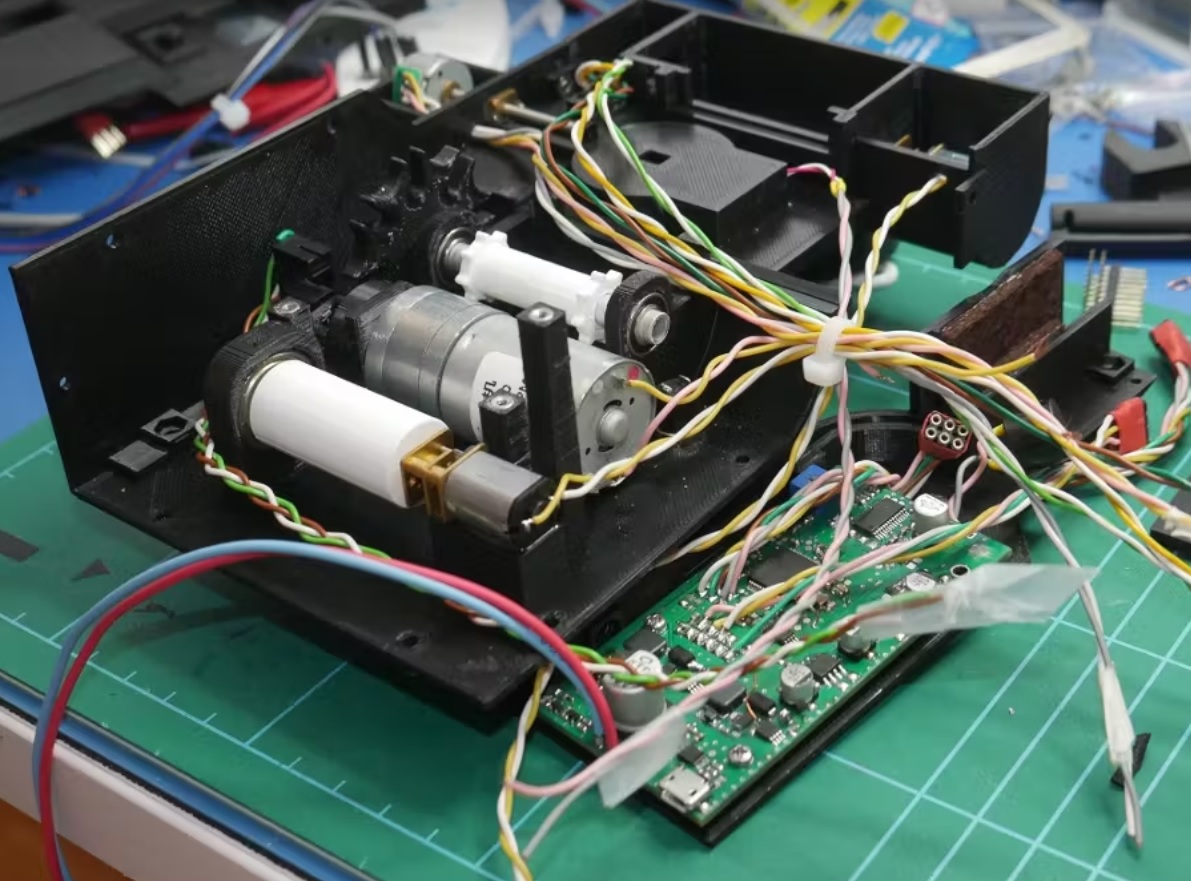This 3D-printed movie camera takes 35mm film and brings back nostalgia
3D-printed movie camera brings back the nostalgia of film-movies with 35mm canister film!

Ever wanted to shoot a film like those from the era when Hollywood shot on Arriflex… then find yourself hit in the face by the astronomical price of film? Electronics engineer Blaž Semprimožnik might have a solution for you.
Semprimožnik has created a movie camera that shoots rolls of 35mm film, and can provide you with up to a minute of footage when shooting at 18 frames per second. Even better, this camera is able to take color or black-and-white rolls and shoot short films, time-lapse, or even single frames of 35mm. And the icing on the cake? It has a built-in scanning capability. All in one camera!
• Want to shoot film more conventionally? Check out the best film cameras
The camera was invented to be a low-cost way to shoot and scan 35mm films, and in his YouTube video (below) Semprimožnik says: "A couple of years ago I have been occasionally shooting 35mm films with point-and-shoot still cameras while also having the desire to shoot motion picture films.
"Upon reviewing my options, the best way would be to do it with Super8 film, but after financial considerations I concluded that it would be very costly in the long run, since shooting just one standard 50-foot cartridge wouldn’t be enough for me. Purchasing, developing, and digitalizing costs for just one would be over €100 [around $110 / £100 / AU$190]!"
After weighing his options for a better solution, Blaž started from scratch: designing, printing, and building a functional analog movie camera that could use low-cost 35mm film cartridges. The Okto35 was born!
This Geneva-mechanism camera uses a majority of 3D-printed parts including a guide plane, take-up drum, motorized C-mount shifter (which enables film track exposure to be selected using a built-in solenoid light shutter), and a housing with support for interchangeable lenses, along with a DC motor.
The best camera deals, reviews, product advice, and unmissable photography news, direct to your inbox!
Semprimožnik explains how the process works: "A user-friendly GUI with a simple menu system navigation using a joystick button and four different modes of operation: Movie, Photo, Time-Lapse, Scanner, and a system that gathers and processes all data and displays it to the user such as measured exposure values, remaining recording time, current/saved settings, et cetera.
"Nearing the end of coding, many other useful features were added like a timer, recording button modes, and a visual / audible warning system. Programming was done in C language in the STM32 IDE environment."
If any of that means anything to you, then you might be able to build your own using Semprimožnik's instructions. In any case, the experiment from Semprimožnik shows that there are ways to be able to shoot movies on film without it costing the Earth!
If your credit card is feeling brave, check out the best 35mm film to scratch your analog itch. And if you're a little less old school, take a look at the best cameras for video using today's tech, and the best hybrid cameras for stills and movies.

For nearly two decades Sebastian's work has been published internationally. Originally specializing in Equestrianism, his visuals have been used by the leading names in the equestrian industry such as The Fédération Equestre Internationale (FEI), The Jockey Club, Horse & Hound, and many more for various advertising campaigns, books, and pre/post-event highlights.
He is a Fellow of the Royal Society of Arts, holds a Foundation Degree in Equitation Science, and holds a Master of Arts in Publishing. He is a member of Nikon NPS and has been a Nikon user since his film days using a Nikon F5. He saw the digital transition with Nikon's D series cameras and is still, to this day, the youngest member to be elected into BEWA, the British Equestrian Writers' Association.
He is familiar with and shows great interest in 35mm, medium, and large-format photography, using products by Leica, Phase One, Hasselblad, Alpa, and Sinar. Sebastian has also used many cinema cameras from Sony, RED, ARRI, and everything in between. He now spends his spare time using his trusted Leica M-E or Leica M2, shooting Street/Documentary photography as he sees it, usually in Black and White.


